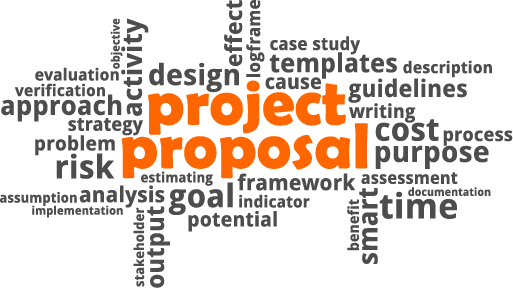Project Proposal
A Project Proposal is a document that consists of detailed core value propositions of your project. It is prepared and presented to all of the stakeholders whether internal or external. The intention behind making this document is to gain the attention of all of the stakeholders and project sponsors.
Once you have the attention of all of the relevant actors associated with the project, the very next step is getting them all excited about the project, so that the project can get the backing it deserves later on.
The main thing you need to remember drafting a project proposal is that you should be aware of the likes and dislikes of the recipients of this proposal. You need to know what’s going on inside their heads. This will allow you to make a project proposal that actually meets the needs of the stakeholders.
Questions you need to Consider to Create a Fruitful Project Proposal

The following are some of the most strategic and operational questions you need to consider while drafting a project proposal. They are:
- How are we going to address the triple constraint of cost, schedule, and scope?
- What is the actual problem that we are trying to cure?
- What type and how much of the overall resources will be available for the project?
- What timeline are we going to be allowed?
- What type of budget are we going to be allocated?
- How will the client benefit from the end product?
- What milestones are going to be set to measure the success of the project?
- Who are the people responsible for the development of the project?
In every project proposal, there are no more than six elements that construct the very foundation on which the proposal stands throughout the project lifecycle. Let us discuss those elements in detail.
Project Proposal Elements

Executive Summary: This element is the most important one because it attracts the audience to your project. The goal of any project proposal is to get all of the stakeholders excited about the project you’re proposing. It’s basically the cliff notes to get an appropriate idea about the project.
The summary should always be very precise and to the point, but it should also be descriptive enough that the client gets a proper idea of how this project’s success will make all their problems go away.
Requirements: Requirements for the project are all the items, resources, and materials needed for it to be developed. A good requirements section of the project proposal should cover both the internal and external needs.
History: The history section of the proposal highlights all of the past accomplishments regarding previous successful projects. It also makes sure to highlight those projects that weren’t more successful. This lets the stakeholders know that you have learned from your mistakes and you will work twice as hard on this project.
Solution: This section properly describes how your project is going to solve the client’s problem in the most efficient way possible. This section also includes the PM techniques, procedures, and skills that the project team will use in project development.
Authorization: This section highlights all of the decision-makers and their roles regarding the project. It also highlights the actors that are going to have the definitive authority on the client’s side.
Appendix: All of the information that was not made clear or properly enunciated in the project proposal is present in the appendix for everyone to see. It’s also where most of the detailed information is located for all of the team members and the stakeholders to learn more about the project.
Also read:
How to Write an Effective Project Charter?
Developing SMART Goals

The best approach to develop all of the milestones and goals related to your project proposal is to use the SMART system. Let us take a look at all of the elements that this system is composed of:
Specific: While developing the goals and objectives for your project, you need to make sure that both of them are as specific, concise and clear as possible to the task at hand.
Measurable: You need to make sure that all of your goals and objectives are measurable with the help of some sort of metrics so that it becomes clear to the stakeholders that things are on track and everything is fine when they decide to analyze the project.
This also helps them to give their input when they analyze the project and something about the project is off track and needs to be addressed.
Measurable goals also make it very easy to create the relevant milestones for your project that will track the progress your project is making and identify a reasonable timeframe for the project to be completed.
Attainable: It is very important for every project in the organizational paradigm to have a “reach” goal. This is the goal that, if accomplished, would mean that the project is going above and beyond expectations.
This makes it very important, but you should never forget about the core goal of the project that should be made attainable if the project truly wants to succeed. This goal keeps the morale high and the project gets to develop with more time and resources to spare.
Relevant: Another thing you need to make sure is that all of the goals associated with your project are directly relevant to the development of the project and they should properly address the scope of the project within which you are working.
Time-Based: Timeline and all of the specific dates associated with the project should be present at the core of all of the objectives and goals defined by you.
What these details do is that the project keeps on track and ensures that all of the team members are capable of managing all of the work they are assigned to regarding the project development process.
Conclusion
Building an efficient proposal is very important for the project, so if it requires any extra time and consideration in the drafting process, you should put in more hours and get it done perfectly.

